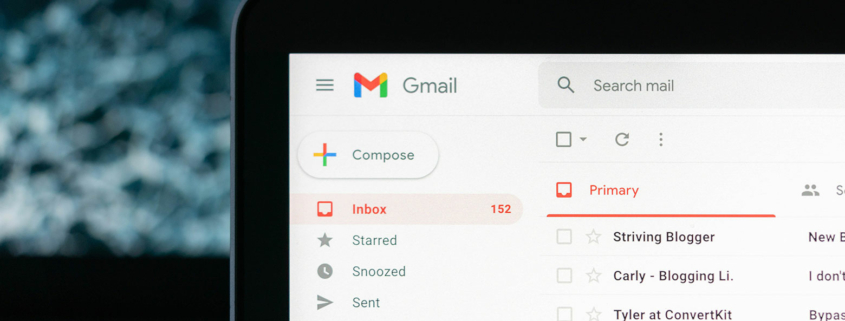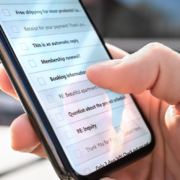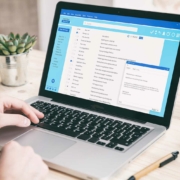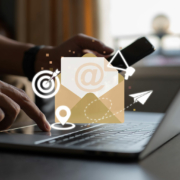How to Nail a Strategic Email Sequence
Believe it or not, email marketing crushes other strategies in ROI (source: Demand Curve). It’s one of the most effective methods for reaching out to existing customers, building relationships, lead nurturing, and generating sales. But successful email marketing is way more than just hitting “send.” A lot goes into making the right (profitable) email sequence.
What Is an Email Sequence?
Let’s break it down: an email sequence is a series of automated emails sent to subscribers based on their behavior or a specific trigger. Follow-up emails are often time-based and triggered to send a few days after the first email. You may also hear the term “drip campaign,” which are automated emails triggered by an action and then sent at a predetermined interval.
There are a few different types of email sequences with their own goals and strategies.
Email Sequence Examples
-
- Welcome email sequence: creates a first impression with new subscribers and tells them more about you
- Onboarding email sequence: a leveled-up email sequence that helps move subscribers through your sales funnel
- Re-engagement email sequence: an email series that attempts to send subscribers back to your site and make another purchase
- Lead nurturing email sequence: provides more information to the subscriber to push them down the sales process and turn leads into new customers
- Abandoned cart email sequence: a follow-up sequence triggered by someone adding to their ecommerce online shopping cart and just leaving it there without completing the purchase (we’ve all been there)
- Upsell and cross-sell email sequence: uses a customer’s buyer history and recommends other products
How Email Campaigns Work in Marketing
An automated email sequence typically consists of a series of emails strategically sent to a subscriber over time. These emails can be triggered by various actions, such as signing up for a newsletter email list, purchasing a product, cart abandonment, or clicking on a specific link.
A sequence aims to build a relationship with a subscriber, nurture it, and guide them toward taking a specific action. Examples include making a purchase, downloading a case study, or attending a webinar. By sending the right email at the right time, you can help educate, engage, and persuade subscribers to take action. In order to do this, you need to get in the head of your customer.
Benefits of (Good) Email Marketing Campaigns
The days of salespeople sending cold emails to potential leads and crossing their fingers are over. Taking the time to create a strategic email marketing plan finds new leads, builds trust with your brand, and pushes subscribers through your sales process.
Increased Consumer Engagement
Because the sequence consists of targeted and personalized emails, you can increase the engagement and interaction of subscribers. It’s no longer the generic one-size-fits-all emails companies sent in the past.
Improved Conversion Rates
An email sequence guides subscribers toward taking a specific action, such as making a purchase, potentially leading to higher conversion rates. What causes the consumer to act is the personalized nature of the message. More often than not, it addresses a pain point.
Better Customer Retention
Having a paying customer is just the beginning. Wouldn’t you rather have a brand ambassador and a repeat customer? An excellent sequence builds stronger relationships with subscribers, which leads to customer retention. The customer doesn’t feel abandoned after making the buy. Rather, they feel that the business cares about them afterward to make sure they’re happy with the product. It’s not rocket science; happy customers buy again and tell others to buy, too.
Time-Saving Sales Tools
Yeah, you need to put the energy into developing an email strategy, but successful email marketing doesn’t have to be a time suck. Email automation tools allow you to set them up to send after they’re triggered, so the sales team doesn’t need to sit and wait by their computer to write up a sales email every time a new lead comes through. Plus, you can save an email sequence template to make creating new emails even easier.
What Are the Best Practices for Creating an Email Sequence?
Creating an effective sequence requires careful planning and execution while adhering to the CAN-SPAM Act. One of the regulations in the act is that you need a clear unsubscribe option — and you have to honor that wish. Not only is it a legal requirement, it goes both ways: you don’t want them on your email list, either! Continuously sending emails to people who don’t want to receive them is tanking your metrics.
So yes, you need to meet federal regulations, but that’s not all that goes into sending the best email you can. We’re feeling generous today, so we’re going to share some email marketing best practices.
Goal Oriented
Don’t even think about sending an email to new leads without a clear goal in mind. Seriously, delete that draft. Know what you want to communicate before you hit their inbox. If not, you’re just filling their inbox with junk (and literally no one wants that).
Audience Segmentation
Like we said, you don’t want to send your subscribers an email that they don’t care about. Segment your audience into groupings based on consumer behavior, interests, or demographics. It goes a long way toward creating personalized and targeted emails that resonate with subscribers.
Clean Your List
While you’re segmenting your audience, take a look at any email addresses that keep bouncing back. Eliminating those emails from your list helps your deliverability metric and boosts your credibility.
Engaging Subject Lines
The email subject line is the first thing subscribers see, so you gotta wow them with an engaging and compelling subject line that entices a would-be reader and maximizes open rates. Try a witty opening line, throw an emoji or two in there, be direct, address their pain points, or brag that you can solve their problem. Try a couple of different tactics and see what sticks.
Valuable Content
An email has to provide value to subscribers. Examples include tips that help them solve problems or achieve goals. Besides being welcomed in the inbox, valuable content builds trust and credibility. In some cases, it can also turn into shareable information. It’s a simple concept at the end of the day. If they don’t find your email a waste of time, they are more likely to open them in the future.
Call to Action
Any email in a sequence must have a clear call to action (CTA). It guides the subscribers into doing what you want them to do. It doesn’t have to just be about a transaction; you could drive your audience to click through to your website or read a blog article.
Test, Test, and Test Again
At the heart of each excellent campaign is a battery of tests that lead to optimized content. Testing and optimizing an email sequence helps improve its effectiveness over time. Possible tweaks in response to test results are changing subject lines, content, and calls to action to find those that are the most effective with the test audience.
How Do I Get Help?
The best email is the one that’s designed specifically for your audience — and has the strategy behind it to make it work. Email marketing automation makes this even easier, but how do you get started? No fear, Lift Marketing is here! We can design a marketing strategy for your company with email sequences that make your subscribers feel heard and want to buy. When you’re ready to raise your expectations for marketing, give us a call.








